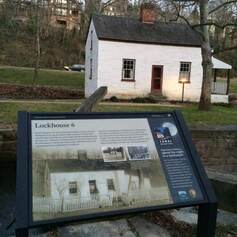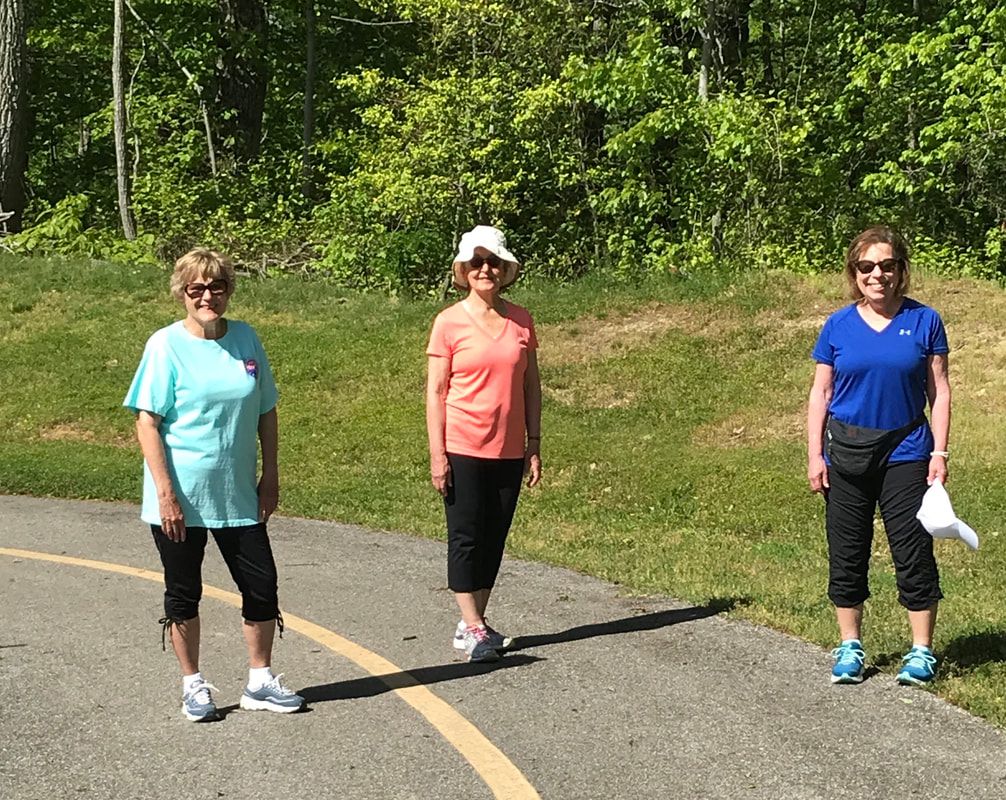 Lockhouse 6 on the C&O Canal, one of many sights to enjoy virtually as you build miles. Lockhouse 6 on the C&O Canal, one of many sights to enjoy virtually as you build miles. As the COVID-19 pandemic continues to cancel events and travel plans, the September 11th National Memorial Trail Alliance has launched a challenge to encourage walkers, runners, and cyclists to tour the 9/11 Trail virtually while staying close to home. For motivation, the Alliance will send encouraging messages to all who register for the challenge and reward participants with commemorative swag as they reach each of the three memorials on the 1,300-mile route. Travelers begin in Arlington, Virginia, at the two-acre September 11th Pentagon Memorial. From there they head northwest, beginning a clockwise tour of the roughly triangle-shaped Trail. At mile 246 they reach the Flight 93 National Memorial in Somerset County, Pennsylvania. At mile 955 they reach the museum and reflecting pools at the site of the twin towers in New York City. And at mile 1,356 they return to Washington, D.C. In between is history, natural beauty, and culture: the Antietam and Gettysburg battlefields, bucolic canal paths and major urban greenways in New York City, Philadelphia, Baltimore, and Washington, D.C. Bicycle tourists Eric Brenner and Wayne Clark created the virtual trail tracker by documenting the miles and featured sights after they biked the entire 9/11 Trail in 2018. Brenner serves on the board of the nonprofit September 11th National Memorial Trail Alliance and Clark serves on its advisory board. On a detailed spreadsheet, they list the miles beginning in Arlington, Virginia, and heading clockwise, noting sites along the way with live links and a handful of photos per segment. Register for the free challenge and follow along on our tracker, which points out some of the site you’ll pass with links for more information and photos. Notify us as your mileage brings you to each of the 9/11 memorial sites and we’ll send commemorative swag. “Nothing compares to walking or biking the trail, but this tool may encourage people to try parts of the trail near where they live — while safely following COVID-19 distance restrictions,” Brenner says. “And many more people are walking on treadmills and biking on stationary bikes. If tracking your miles gives you incentive to exercise more, you can use our spreadsheet to see where you would be on the trail and what you might see.” Darilyn Marinelli recently started the 9/11 Trail Challenge and encouraged a handful of friends to join her. Now retired, Marinelli once ran a widely popular walking program for senior citizens in Prince Georges County, MD, so she knows the power of group challenges to motivate people to exercise more.
“Walking is the best fitness activity to reach the most people,” she says. “It’s free, accessible, and anyone can do it.” Marinelli recently moved to a 55-plus community in Maryland. The community pool and fitness room are closed because of the pandemic, so walking is the best exercise option. She goes out four to five days a week and walks three to four miles while getting to know a couple new neighbors. She emails her walking partners and a few other friends who are doing the challenge with photos and notes about what they’d be passing, thanks to the virtual tour tracker. “We know it may take us a good year or so to complete this,” she says of the challenge. “Afterwards, we’ll go down to the Pentagon memorial, and maybe take a road trip to the Flight 93 site, to see where we’ve traveled.” The 9/11 Trail is halfway to its goal of being located on traffic-separated paths and greenways. The leg from Washington, D.C., to Somerset County is nearly all off of roads as it follows the C&O Canal and Great Allegheny Passage trails. A number of trails in eastern Pennsylvania and New Jersey break up the second leg, while the eastern leg from New York City to Washington, DC, features the D&R and D&L canal towpaths and the Schuylkill River Trail into Philadelphia. The rich mix of urban and rural, history and culture makes the 9/11 Trail especially intriguing to explore — and a timely source of inspiration and education during these stay-at-home times. “Those of us who have traveled the entire 1,300-mile route can attest that this trail is not the shortest distance between the three 9/11 sites,” says Brenner. “The founders of this organization chose to tie in additional historic sites where our national spirit of perseverance and resilience have been proven. Perseverance and resilience are two traits that we will need to demonstrate in the weeks and months ahead.” “We’re excited to offer this tool to help more people discover our trail and all there is to see,” says Tom Baxter, president of the September 11th National Memorial Trail Alliance. “For the millions of people who live close to the trail, we hope the virtual tour offers ideas for new places to visit and trips they can take, once it is safe again for us all to travel and explore.” Comments are closed.
|
Archives
March 2022
Categories
All
|

 RSS Feed
RSS Feed